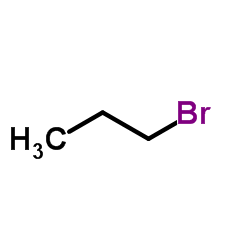Exposure to 1-bromopropane induces microglial changes and oxidative stress in the rat cerebellum.
Kaviarasan Subramanian, Sahabudeen Sheik Mohideen, Akio Suzumura, Naoya Asai, Yoshiki Murakumo, Masahide Takahashi, Shijie Jin, Lingyi Zhang, Zhenlie Huang, Sahoko Ichihara, Junzoh Kitoh, Gaku Ichihara
文献索引:Toxicology 302(1) , 18-24, (2012)
全文:HTML全文
摘要
1-Bromopropane (1-BP), an alternative to ozone-depleting solvents, is reported to exhibit neurotoxicity and reproductive toxicity in animals and humans. However, the underlying mechanism of the toxicity remains elusive. This study was designed to identify the microglial changes and oxidative stress in the central nervous system (CNS) after 1-BP exposure. Four groups of Wistar-ST rats (n=12 each) were exposed to 0, 400, 800 and 1000ppm of 1-BP, 8h/day for 28 consecutive days. The cerebellum was dissected out in 9 rats of each group and subjected to biochemical analysis, while the brains of the remaining 3 rats were examined immunohistochemically. Exposure to 1-BP increased the levels of oxidative stress markers [thiobarbituric acid reactive substances (TBARS), protein carbonyl and reactive oxygen species (ROS)] in a dose-dependent manner. Likewise, there was also 1-BP dose-dependent increase in nitric oxide (NO) and dose-dependent decrease in protein concentrations in the cerebellum. Immunohistochemical studies showed 1-BP-induced increase in cd11b/c-positive microglia area in the white matter of the cerebellar hemispheres. The results showed that exposure to 1-BP induced morphological change in the microglia and oxidative stress, suggesting that these effects are part of the underlying neurotoxic mechanism of 1-BP in the CNS.Copyright © 2012 Elsevier Ireland Ltd. All rights reserved.
相关化合物
| 结构式 | 名称/CAS号 | 分子式 | 全部文献 |
|---|---|---|---|
 |
溴代丙烷
CAS:106-94-5 |
C3H7Br |
|
Facile charge-displacement at silicon gives spaced-out react...
2011-10-19 [J. Am. Chem. Soc. 133(41) , 16560-5, (2011)] |
|
Apoptosis contributes to testicular toxicity induced by two ...
2010-09-01 [Toxicol. Ind. Health 26(8) , 513-24, (2010)] |
|
Neuro-reproductive toxicities of 1-bromopropane and 2-bromop...
2005-03-01 [Int. Arch. Occup. Environ. Health 78(2) , 79-96, (2005)] |
|
Monotonic Bayesian semiparametric benchmark dose analysis.
2012-07-01 [Risk Anal. 32(7) , 1207-18, (2012)] |
|
Effects of sub-acute and sub-chronic inhalation of 1-bromopr...
2013-02-08 [Toxicology 304 , 76-82, (2013)] |